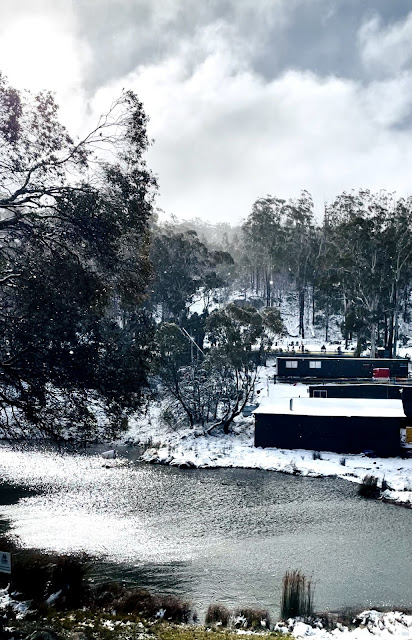"We're
here to make space travel more accessible to all", said
uber-entrepreneur, Sir Richard Branson, the linchpin and cashcow of Virgin
Galactic, a fierce competitor in the new billionaires space race.
With seats on board starting at USD$450,000, it might do to wait until the sales.
With Australia slamming shut its
international borders for an entirely indefinite period of time in a
tough stance to reduce the spread of COVID-19, it's interesting to look at
other options for travel that are just as exciting as earth-bound travel, and
indeed alternative ways of getting there. Outer space!
What news from the outer space
world? Well, here’s a thing. Space rockets have been hurtling from earth up
into the stratosphere, one billionaire after another. Richard Branson onboard
his Virgin Galactic, Elon Musk sending up his SpaceX,
and that other billionaire, Amazon founder and business magnate, Jeff Bezos, on
his Blue Origin journey. Pew-pew-pew-pew-pew and then fighting
each other with giant laser beams - pew-pew-pew-pew-pew. Oh wait, no sorry,
that’s Star Wars. I regularly get confused between Star Wars and
IRL.
HAVING SAID THAT, I note that the
U.S. Military have recently shot down an intercontinental ballistic
missile in outer space from an aircraft carrier based off the coast of Hawaii
in a testing exercise, so hi there Star Wars.
All of these recent space
launches (with the exception of the extremely non-televised US military
exercise) have been televised on some type of platform – TV network, YouTube,
even Facebook stories.
It’s always entertaining during
space shuttle launches when the commentators discuss how long it’s going to
take them to get to their destination, as if 27.5 hours was a long time, as is
the case for the 4 astronauts that Elon Musk’s SpaceX recently took to the
International Space Station (ISS).
Girl, that’s a medium-haul
international travel jaunt for Australians. Sydney to London is 23 hours more
or less, and that’s not including airport waiting time, stopovers, lost
luggage, impromptu body cavity searches, immigration control and waiting for a
shuttle, which takes at least another 18 hours.
While the ISS altitude is only
408 km from earth, it takes over a day to get there, due to the spinny, spinny,
upside-downy nature of our planet (that’s science-y talk – don’t feel bad if
you can’t keep up with the terminology).
So what do they do on their
roadtrip to above and beyond?
Well first of all, it’s not a
roadtrip. It’s very serious space mission business and if you don’t know that,
you can’t go.
Second of all, there’s the
snacks. When I fly international on a long haul, or drive to the shops on a
relatively shorter haul, I always take snacks. What snack do the astronauts
take and at what point in the first hour do they eat them all?
As you’d expect from NASA, the
criteria for developing space food is: safety, stability, palatability,
nutrition, resource minimisation, variety, reliability, and usability. Sure,
but they probably just have M&Ms, and kill some time - and get some
exercise - by chasing the little suckers around the zero-gravity cabin.
Also, are there even any
Starbucks on the way if you need a caffeine pick-me-up? Who gets to drive? Can
you call shotgun? Assigned seating is absolutely very serious business on a
long haul. There’s certainly a slew of questions that I think we all want answered
before we’ll fork out 450 grand.
In terms of timeliness, I suppose
taking a space ship to the ISS is slightly faster than taking the train, but I
certainly don’t think you shave off that much time.
One advantage of flying away
from earth is you don’t have to put up with our pesky airport rules - no ticket
counters, no passport control, no immigration checking to see if you’re
carrying any activated vegemite and no waiting for shuttles that never come (or
is that just LAX).
It certainly seems like, statistically,
it’s a lot safer travelling on a space ship than a commercial earth-bound
airline, specifically when it comes to take off and landing. On a space ship,
you are flung into space and then flung back into the ocean. Perfectly
safe.
Boeing research shows that
takeoff and landing are statistically more dangerous than any other part
of a commercial earth-bound airline flight, with 49% of all fatal accidents
happen during the final descent and landing phases of the average flight,
while 14% of all fatal accidents happen during takeoff and initial climb.
It's certainly often surmised by
flight attendants in their pre-flight safety message that the plane will in
fact crash if you don't return your tray table to the upright and locked
position after your meal. Absolutely no need for food trays in space travel;
your food floats. See! Space travel is the future.
So can you buy a ticket to go
into space? Well, yes. I don't know about the future of international
earth-bound air travel but space tourism will soon be a thing I'm sure of it,
but it may be a wiser financial investment to just watch Star Wars.
Cost:
$$$$$$$$$$$$$$$$$$$$$$$$$$$$$$$$$$$$$$$$$$$$$$$$$$$$$$$$$$$$







